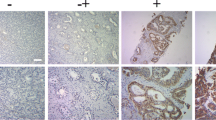Abstract
Molecular targets in prostate cancer are continually being explored, for which there are currently few therapeutic options. Rapamycin (RPM) is an antifungal macrolide antibiotic isolated from Streptomyces hygroscopicus which can inhibit the G1 to S transition. URGCP (upregulator of cell proliferation) is a novel gene located on chromosome 7p13. We aimed to investigate the role of URGCP gene expression changes in PC3, DU145, and LNCAP cell lines with/out RPM. Average cell viability and cytotoxic effect of rapamycin were investigated at 24 h intervals for three days by using Trypan blue dye exclusion test and XTT assay. Cytotoxic effects of rapamycin in DU145, PC3 and LNCAP cells were detected in time and dose dependent manner with the IC50 doses within the range of 1–100 nM. As the results were evaluated, IC50 doses in the DU145, PC3, and LNCaP cells were detected as 10, 25, and 50 nM, respectively. The mean relative ratios of URGCP gene expression in DU145, LNCAP and PC3 cells were found as −1.48, 6.59 and −13.00, respectively, when compared to rapamycin-free cells. The False Discovery Rate adjusted p value in DU145, LNCAP and PC3 were 1.25 × 10−5, 2.20 × 10−8 and 6.20 × 10−9, respectively. When the URGCP gene expression level is compared between the dose and control group, we found that URGCP gene expression was significantly decreased in dose groups of DU145 and PC3 cells.



Similar content being viewed by others
References
Amato RJ, Jac J, Mohammad T, Saxena S (2008) Pilot study of rapamycin in patients with hormone-refractory prostate cancer. Clin Genitourin Cancer 6:97–102
Chin JL, Reiter RE (2004) Molecular markers and prostate cancer prognosis. Clin Prostate Cancer 3:157–164
Garcia JA, Danielpour D (2008) Mammalian target of rapamycin inhibition as a therapeutic strategy in the management of urologic malignancies. Mol Cancer Ther 7(6):1347–1354
Goktas S, Crawford ED (1999) Optimal hormonal therapy for advanced prostatic carcinoma. Semin Oncol 26:162–173
Hashemolhosseini S, Nagamine Y, Morley SJ, Desrivières S, Mercep L, Ferrari S (1998) Rapamycin inhibition of the G1 to S transition is mediated by effects on cyclin D1 mRNA and protein stability. J Biol Chem 273:14424–14429
Holzbeierlein J, Lal P, LaTulippe E, Smith A, Satagopan J, Zhang L et al (2004) Gene expression analysis of human prostate carcinoma during hormonal therapy identifies androgen responsive genes and mechanisms of therapy resistance. Am J Pathol 164:217–227
Hou G, Xue L, Lu Z, Fan T, Tian F, Xue Y (2007) An activated mTOR/p70S6K signaling pathway in esophageal squamous cell carcinoma cell lines and inhibition of the pathway by rapamycin and siRNA against mTOR. Cancer Lett 253:236–248
Huang J, Zhu B, Lu L, Lian Z, Wang Y, Yang X, Satiroglu-Tufan NL, Liu J, Luo Z (2009) The expression of novel gene URG4 in osteosarcoma: correlation with patients’ prognosis. Pathology 41:49–54
Hussain M, Wolf M, Marshall E, Crawford ED, Isenberger M (1994) Effects of continued androgen-deprivation therapy and other prognostic factors on response and survival in phase II chemotherapy trials for hormone-refractory prostate cancer: a southwest oncology group report. J Clin Oncol 12:1868–1875
Kantoff PW, Halabi S, Conaway M (1999) Hydrocortisone with or without mitoxantrone in men with hormone-refractory prostate cancer: results of the cancer and leukemia group B 9182 study. J Clin Oncol 17:2506–2513
Kremer CL, Klein RR, Mendelson J, Browne W, Samadzedeh LK, Vanpatten K et al (2006) Expression of mTOR signaling pathway markers in prostate cancer progression. Prostate 66:1203–1212
Lee CH, Inoki K, Guan KL (2007) mTOR pathway as a target in tissue hypertrophy. Annu Rev Pharmacol Toxicol 47:443–467
Masiello D, Mohi MG, McKnight NC, Smith B, Neel BG, Balk SP et al (2007) Combining an mTOR antagonist and receptor tyrosine kinase inhibitors for the treatment of prostate cancer. Cancer Biol Ther 6:195–201
Nozawa H, Watanabe T, Nagawa H (2007) Phosphorylation of ribosomal p70 S6 kinase and rapamycin sensitivity in human colorectal cancer. Cancer Lett 251:105–113
Pfaffl MW (2001) A new mathematical model for relative quantification in real-time RT-PCR. Nucleic Acids Res 29(9):e45
Sandler HM, Narayan S, Smith DC (2003) Combined modality treatment for prostate cancer: role of chemotherapy. Semin Oncol 30:95–100
Satiroglu-Tufan NL, Dodurga Y, Gok D, Cetinkaya A, Feitelson MA (2010) RNA interference-mediated URG4 gene silencing diminishes cyclin D1 mRNA expression in HepG2 cells. Genet Mol Res 9(3):1557–1567
Song J, Xie H, Liany Z, Yang G, Du R, Du Y, Zou X, Jin HF, Gao J, Liu J, Fan D (2006) Enhanced cell survival of gastric cancer cells by a novel gene URG4. Neoplasia 8:995–1002
Tufan NL, Lian Z, Liu J, Pan J, Arbuthnot P, Kew M, Clayton MM, Zhu M, Feitelson MA (2002) Hepatitis Bx antigen stimulates expression of a novel cellular gene, URG4, that promotes hepatocellular growth and survival. Neoplasia 4:355–368
Tufan NL, Lian Z, Liu J, Pan J, Arbuthnot P, Kew M, Clayton MM, Zhu M, Feitelson MA (2002) Hepatitis Bx antigen stimulates expression of a novel cellular gene, URG4, that promotes hepatocellular growth and survival. Neoplasia 4:355–368
Velcheti V, Karnik S, Bardot SF, Prakash O (2008) Pathogenesis of prostate cancer: lessons from basic research. Ochsner J 8(4):213–218
Wang W, Jia WD, Xu GL, Wang ZH, Li JS, Ma JL et al (2009) Antitumoral activity of rapamycin mediated through inhibition of HIF-1 alpha and VEGF in hepatocellular carcinoma. Dig Dis Sci 54:2128–2136
Zhang JF, Liu JJ, Lu MQ, Cai CJ, Yang Y, Li H et al (2007) Rapamycin inhibits cell growth by induction of apoptosis on hepatocellular carcinoma cells in vitro. Transpl Immunol 17:162–168
Author information
Authors and Affiliations
Corresponding author
Rights and permissions
About this article
Cite this article
Dodurga, Y., Avcı, Ç.B., Susluer, S.Y. et al. The expression of URGCP gene in prostate cancer cell lines: correlation with rapamycin. Mol Biol Rep 39, 10173–10177 (2012). https://doi.org/10.1007/s11033-012-1891-6
Received:
Accepted:
Published:
Issue Date:
DOI: https://doi.org/10.1007/s11033-012-1891-6




